Earth 2100 has been ravaged by plague and diseases, resulting in the mass destruction of the earth’s major ecosystems. We no longer have the means to produce resources, goods and services to provide for the demand of the human population.
The UN has declared the global crisis and have decided on the implementation of a new system to regulate the remainder of earth’s resources; one that is not based on a monetary value but rather an alternative form currency to maximize the survivability of the human race.
The new system is based on the release of a new skin, an ENCRYPTED BIOMETRIC skin that is constantly monitoring the user’s vitality and health status. Maximizing the survivability of the human race will be a function of maintaining a certain level of health throughout the various regions of the world. This monitoring will be derived through the genecode and the chemical composition of your blood. Your health status will now provide the means for you to obtain or purchase specific goods or resources. More enriching or nutritious resources will be allocated to specific areas where the overall health status of the population is low, and vice versa.
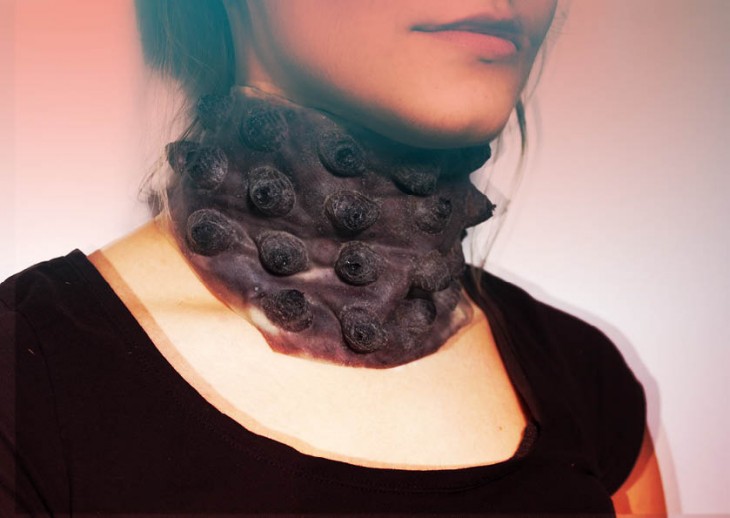
PARALLEL DATA WORLD
Within the same time frame, the advancement in capturing data of the natural, physical world has now created a parallel reality or a parallel earth, purely composed out of data. All elements within the earth now contains a digital trace or code that describes its chemical and physical composition.
Embedded within the new skin, will be a way to interact with this duplicate reality. The interactions with this world can start to influence the behaviour of the population. For example, the skin will start to activate or actuate a series of consequences if the user approaches a physical/chemical hazard or safety points within the physical natural environment.
The severity of consequences will be a function of the user’s proximity to the hazard or safeguard. For example, the skin will apply a range or pressure or heat to the natural skin based on a domain of the distance to the nearest danger point. Through this method, the skin is not directly imposing or forcing a change of behaviour for the user, but acting as an indicator tool for the user to adjust his/her behaviour accordingly.
FUTURE WORLD
What we envision as a result of the new skin, is that the world will no longer be defined by political or geographical boundaries, but rather territories of health zones to maintain certain livability aspects. Whether this is a good outcome or not we shall tell.
Another result of the skin is the development of a new sense, a sixth sense. The development of the skin will bring about research in the comprehension and understanding of the patterns of the skin, creating a new codex or language for the general population to perceive and identify patterns with their other 5 senses.

PRELIMINARY EXPERIMENTATION
The following experiments are a catalogue of the methodical prototyping which took place throughout the seminar and led to the final design.
EXPERIMENT TYPE 01 – External Veins for Blood Transport
The first set of experiments explored viable means of transmitting liquid, specifically blood, within a flexible membrane. Different types of veins were created and tested
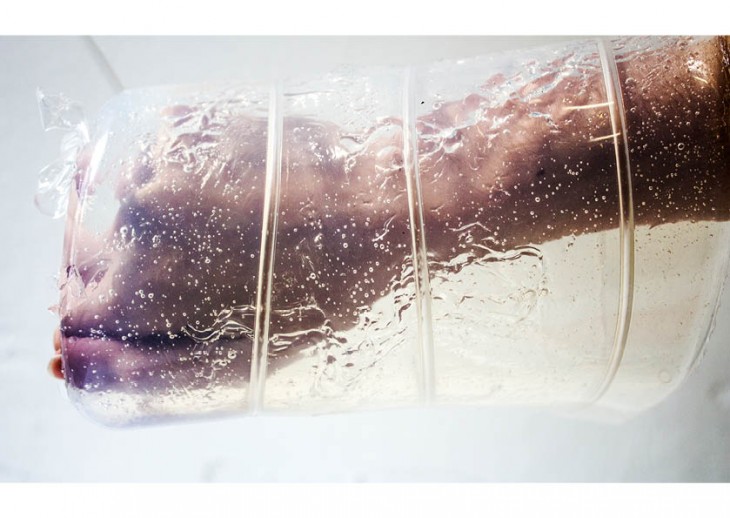
Flexible, plastic tubing is embedded within a clear silicone membrane.
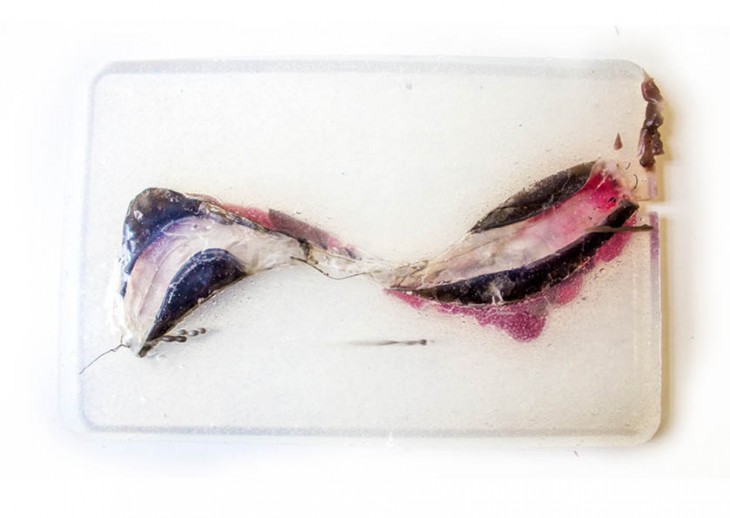
Embedded wax is melted within silicone membrane after current was applied to the nichrome wire and heated. The wax was embedded and melted to create a channel, which could be filled up with liquid.
EXPERIMENT TYPE 02 – External Veins for Blood Transport
The second set of experiments featured the effects of thermochromic pigments added to bioplastic. We created distinct patterns only visible when heated.
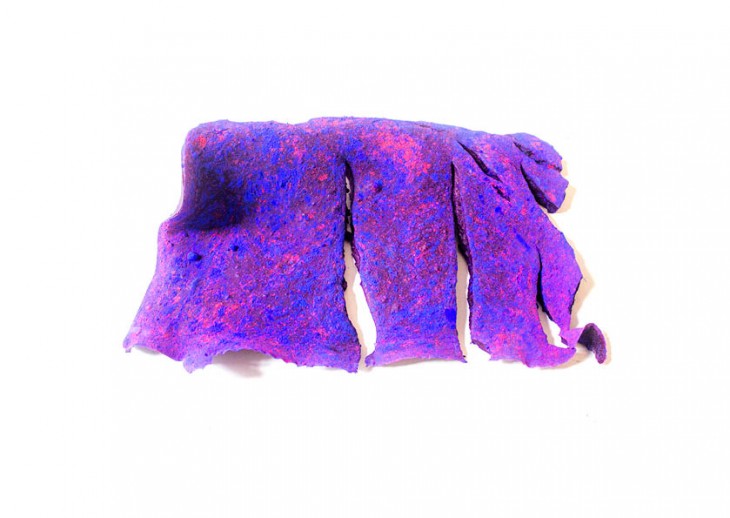
Thermochromic bioplastic composite after drying.
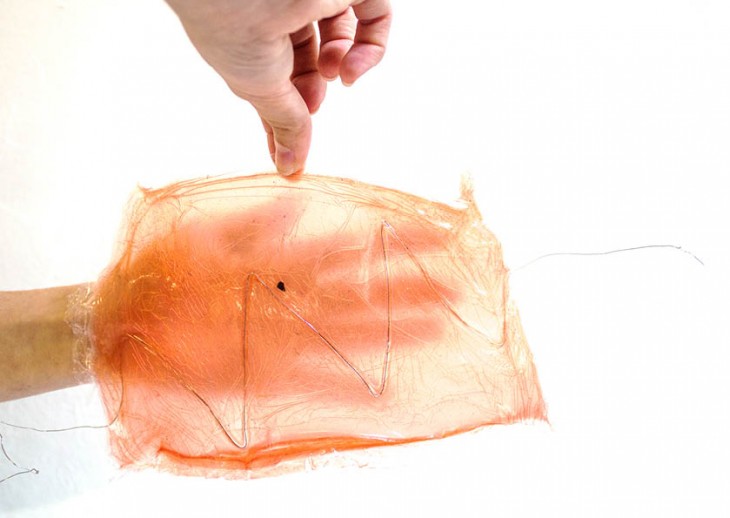
Bioplastic with embedded nichrome wire. The material is semi-translucent and easily wraps around the arm.
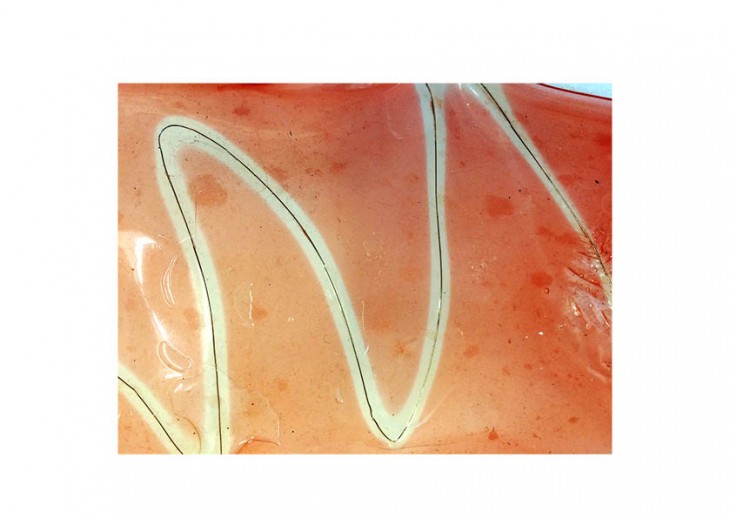
Thermochromic bioplastic with 9V supplied to the nichrome wire.
FINAL PROTOTYPING
The previous tests informed the next stage of testing and experimentation. As a design, pockets to analyze blood and a vein network were to combined as the encrypted biometric skin. The following experiments outline how the skin was created.
continued EXPERIMENT TYPE 01 – Wax Veins
Previously, a wax form was embedded in silicone along with nichrome wire. In this iteration, the nichrome wire was not used. Instead, a heat gun was used to melt the wax.

Plywood mold with and without hardened wax
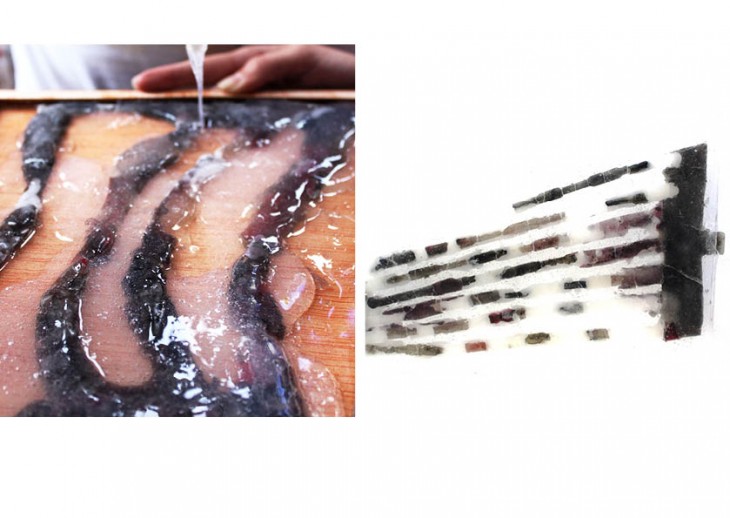
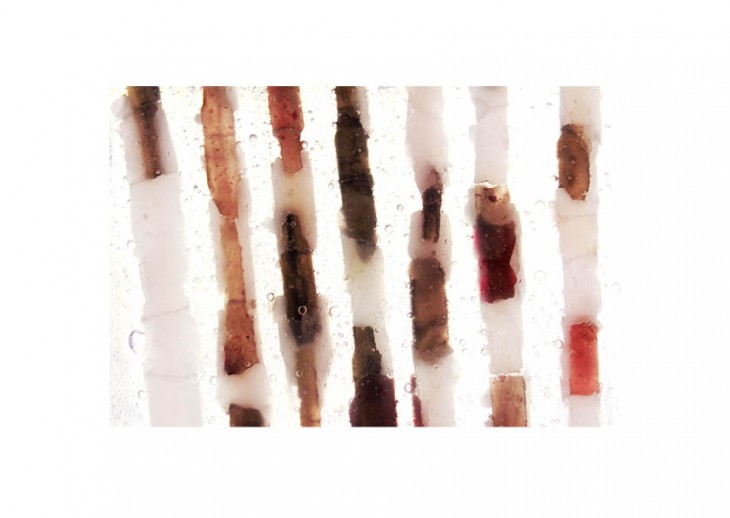
Wax veins embedded within silicone membrane before being melted out with a heat gun.
EXPERIMENT TYPE 03 – Blood Vessels // Analysis Leeches
Blood is pumped through and monitored within external vessels on the second skin. To create a field of blood analysis vessels, a number of different casting techniques and materials were used.

After silicone is poured into the negative mold, the positive is pushed in and the two pieces are clamped together.
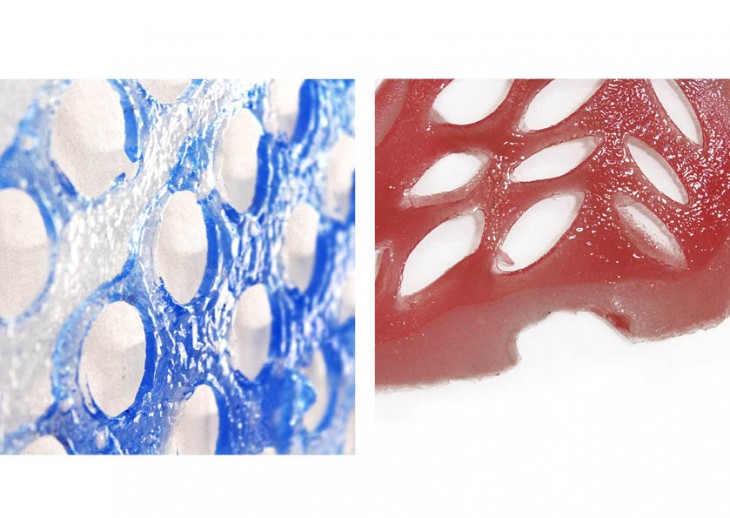
Silicone layer after being removed from mold was torn. The pockets were ripped completely from the membrane, sticking to the milled form.
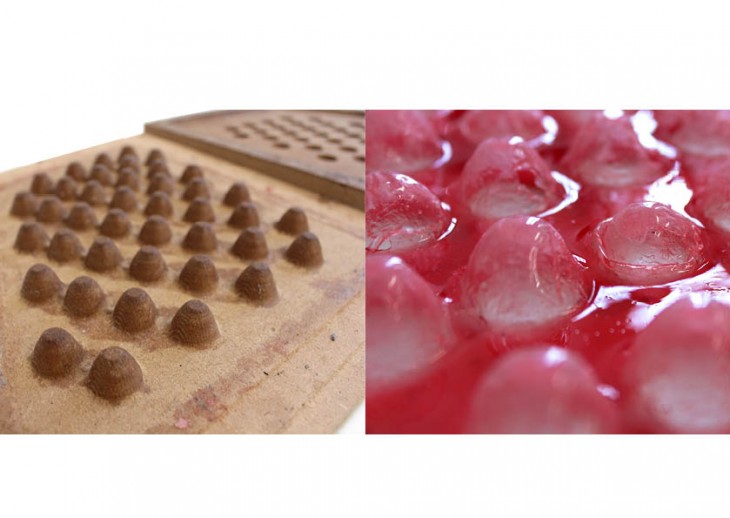
The positive side of the mold was used as a base to pour silicone. The resulting membrane had tears and rips.
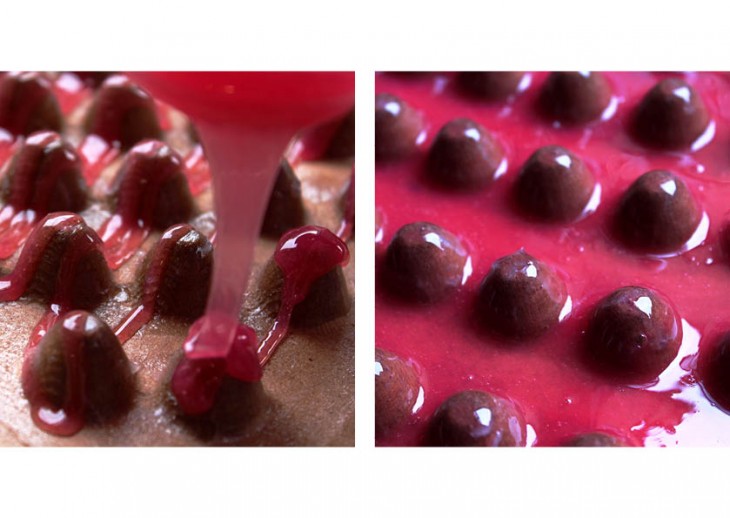
Silicone poured over positive side of mold.
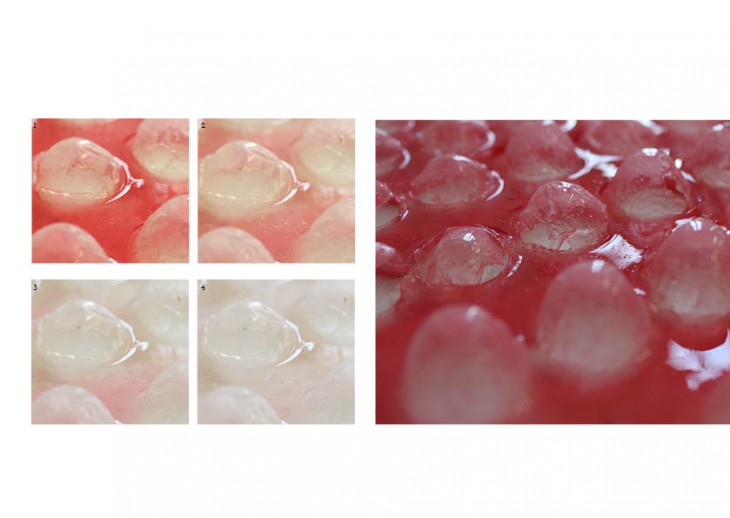
Change in colour when heat is applied to the silicone membrane (1 – no heat, 4 – 30+ degrees Celsius).
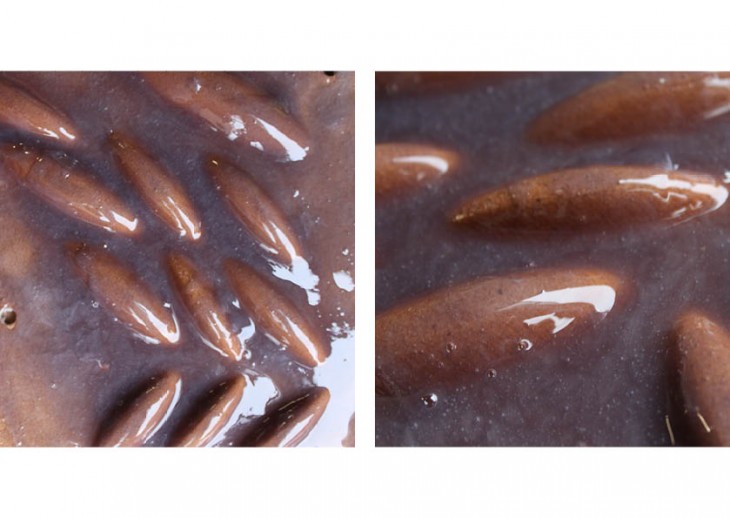
Silicone poured over positive side of mold.

Change in colour when heat is applied to the silicone membrane (1 – no heat, 4 – 30+ degrees Celsius).
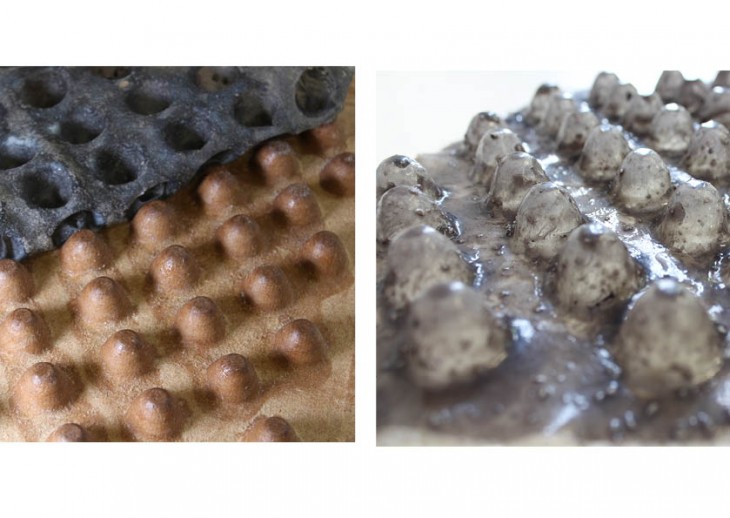
Latex membrane after curing and removal from positive mold.
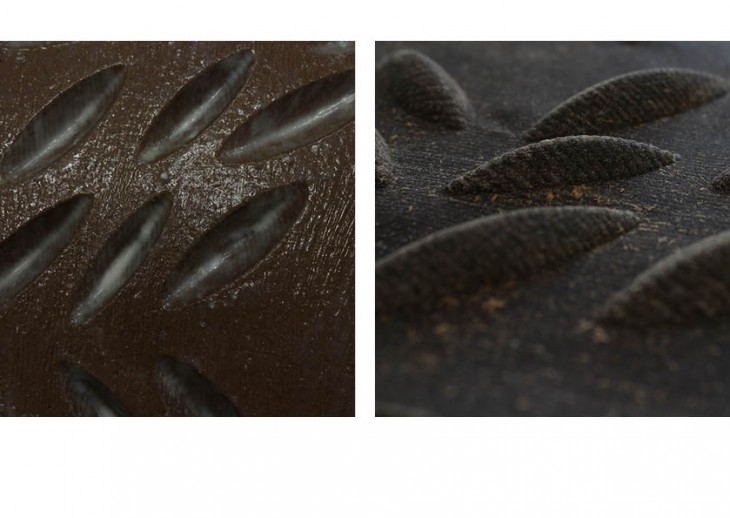
Latex membrane after curing and removal from negative mold.

Latex membrane after curing and removal from positive and negative molds.
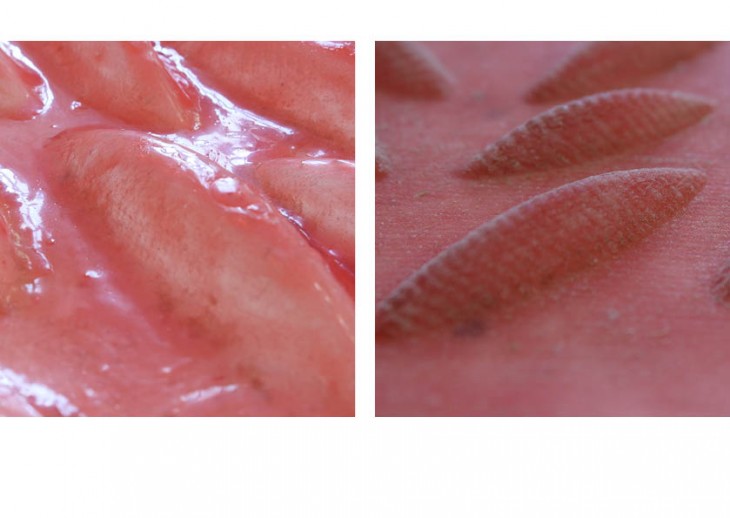
Latex membrane after curing and removal from positive and negative molds.
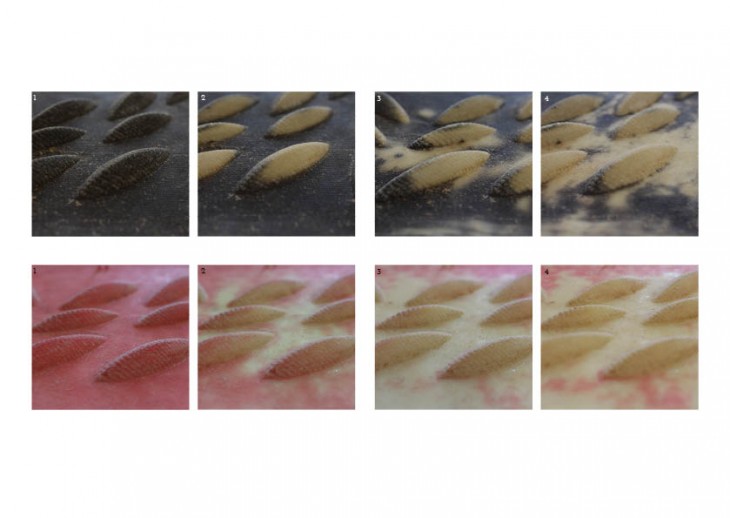
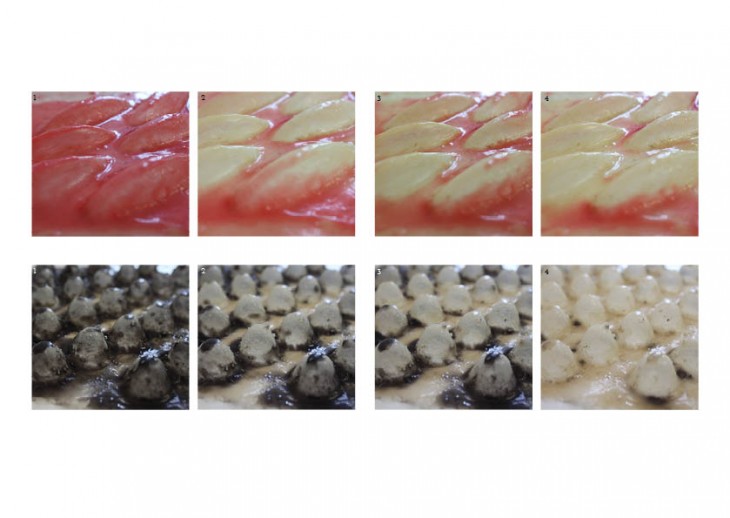
Thermochromic changes in latex membranes.
EXPERIMENT TYPE 04 – Kombucha Skin
Kombucha skin involves growing bacterial cellulose, or a vegetal leather, from steeped green tea, vinegar, water and kombucha cultures. In our experiments, we are aiming to hack the skin’s properties during the growing stage.
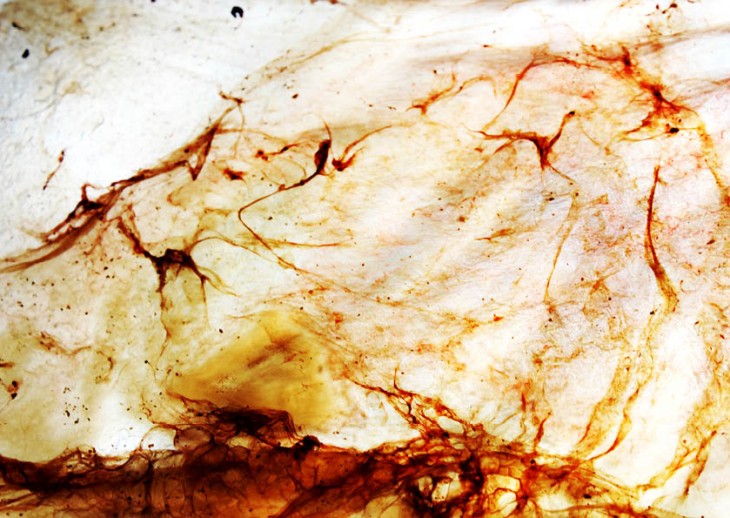
Dried kombucha skin.

Dried kombucha skin (red thermochromic pigment added to left sample, tea leaves added to right sample).

Dried kombucha skin (foam shavings added to left sample, polystyrene balls added to right sample).
Encrypted Biometrics is a project of IaaC, Institute for Advanced Architecture of Catalonia developed at Master in Advanced Architecture in 2016 by:
Students: Jonathan Irawan, Lalin Keyvan, Jean Sebastian Munera and Connor Stevens
Faculty: Anastasia Pistofidou and Manuel Kretzer